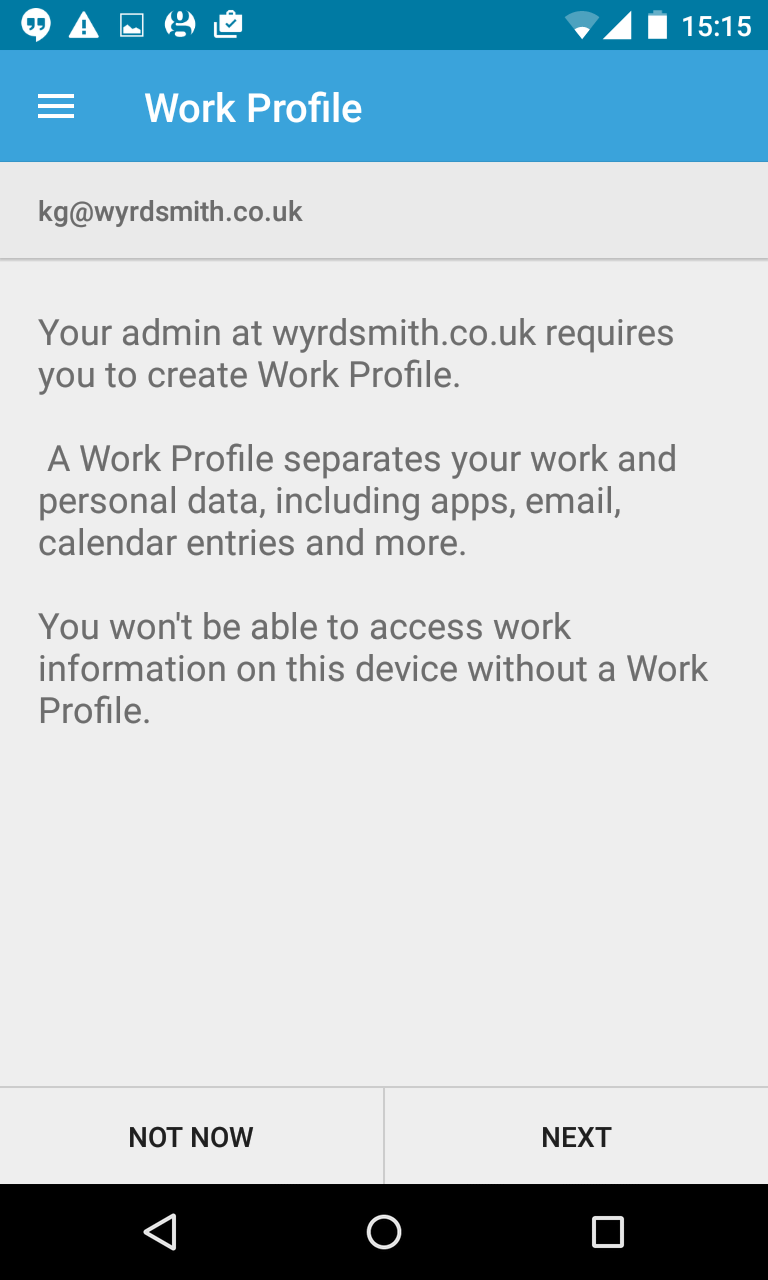Android for Work review
Android for Work introduces some brilliant mobile device management features but feels rough around the edges

It’s inevitable that Android for Work will become an essential tool for business device management, and we look forward to its future development. However, although work profiles are useful, we’d be inclined to wait for the next update rather than rolling Android for Work’s full features out to staff at the earliest possible opportunity.
-
+
Creates clear division between work and personal profiles on a single device; Improved enterprise app management for Android
-
-
Device support is limited; Remote profile removal leaves deactivated apps behind

Android is the most widely used mobile operating system on the market, but has lagged behind iOS when it comes to the range of options available for Bring Your Own Device (BYOD) environments. With the launch of Android for Work, Google hopes to change this.
Android for Work's stand-out feature is the Work Profile, which creates vital separation between your users' personal and business lives, at least when it comes to what's going on with their phones. By giving users an entirely separate set of apps for their work account, controlled via your Mobile Device Management (MDM) service, Android for Work allows you to apply policy restrictions, create an approved list of work apps, and wipe your user's business account without affecting their personal Android account.
Android for Work is supported by most major MDM services, including IBM MaaS360 and VMWare AirWatch, but we're going to be testing it using Google's own MDM tools, built into Google Apps for Work, which costs 3.30 per user per month.
Configuration
If you're a Google Apps for Work user, then Android for Work's settings and options will be integrated into the Security and Device Management areas of your Admin interface. Non-Apps users will have to create a free Google Admin account in order to manage the token that authenticates your MDM provider.

Generating that token is done via a button on the Security screen. If you're using Google Apps for Work to manage devices, your next step is to go to Device management > Mobile > Set up Android for Work, where you have to paste in your token. The process is detailed in the Android for Work support portal, but we'd have welcomed a step-by-step wizard.
Sign up today and you will receive a free copy of our Future Focus 2025 report - the leading guidance on AI, cybersecurity and other IT challenges as per 700+ senior executives
K.G. is a journalist, technical writer, developer and software preservationist. Alongside the accumulated experience of over 20 years spent working with Linux and other free/libre/open source software, their areas of special interest include IT security, anti-malware and antivirus, VPNs, identity and password management, SaaS infrastructure and its alternatives.
You can get in touch with K.G. via email at reviews@kgorphanides.com.
-
 Google is scrapping its dark web report feature — here's everything you need to know and some alternative options
Google is scrapping its dark web report feature — here's everything you need to know and some alternative optionsNews Google said while the dark web report feature offered “general information”, the tool didn’t provide “helpful next steps” for users potentially impacted by a breach.
By Emma Woollacott Published
-
 AI doesn’t mean your developers are obsolete — if anything you’re probably going to need bigger teams
AI doesn’t mean your developers are obsolete — if anything you’re probably going to need bigger teamsAnalysis Software developers may be forgiven for worrying about their jobs in 2025, but the end result of AI adoption will probably be larger teams, not an onslaught of job cuts.
By Ross Kelly Published
-
 JetBrains is mothballing its Fleet IDE service — here’s what developers need to know
JetBrains is mothballing its Fleet IDE service — here’s what developers need to knowNews The Fleet IDE platform will be discontinued later this month and updates will stop
By Ross Kelly Published
